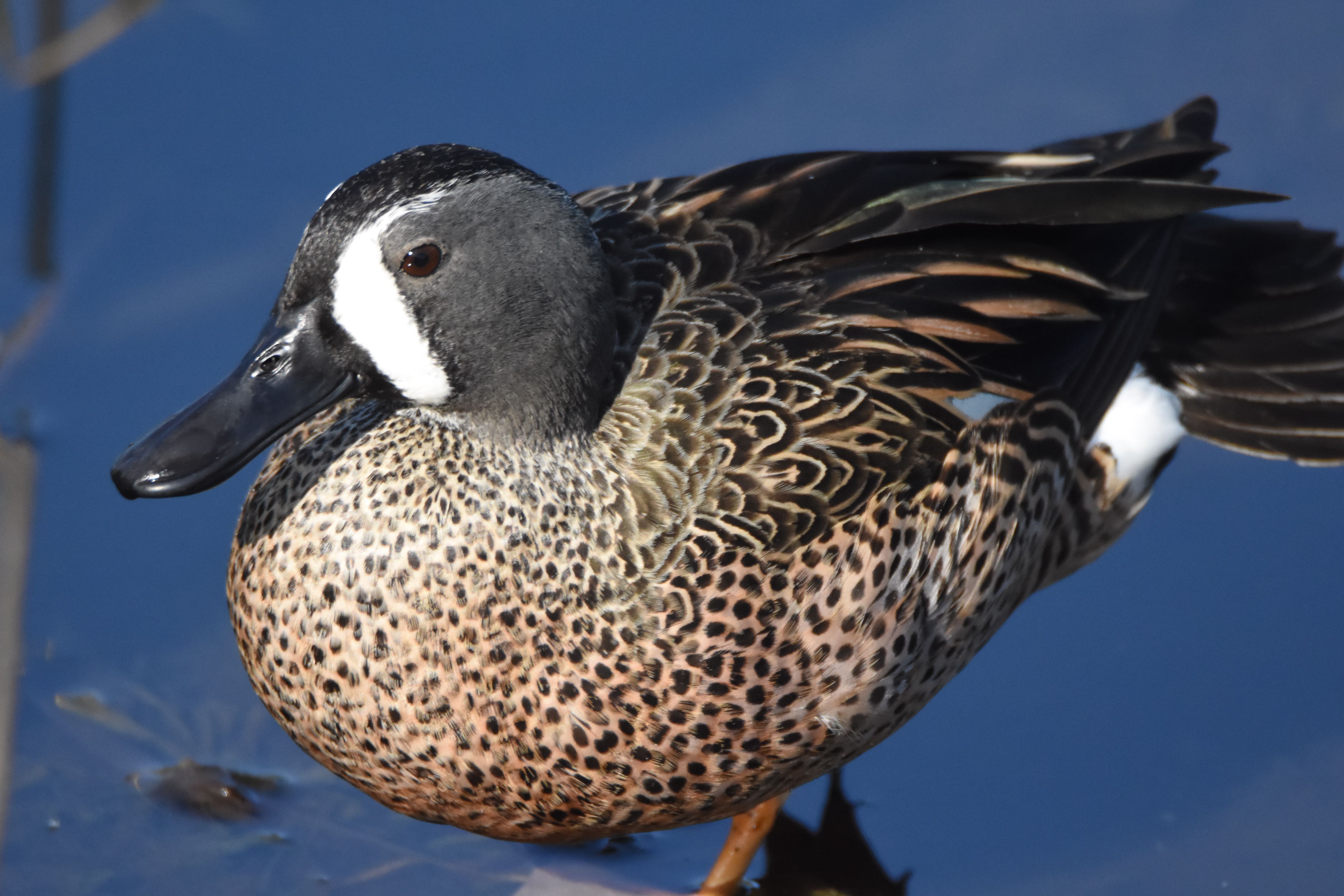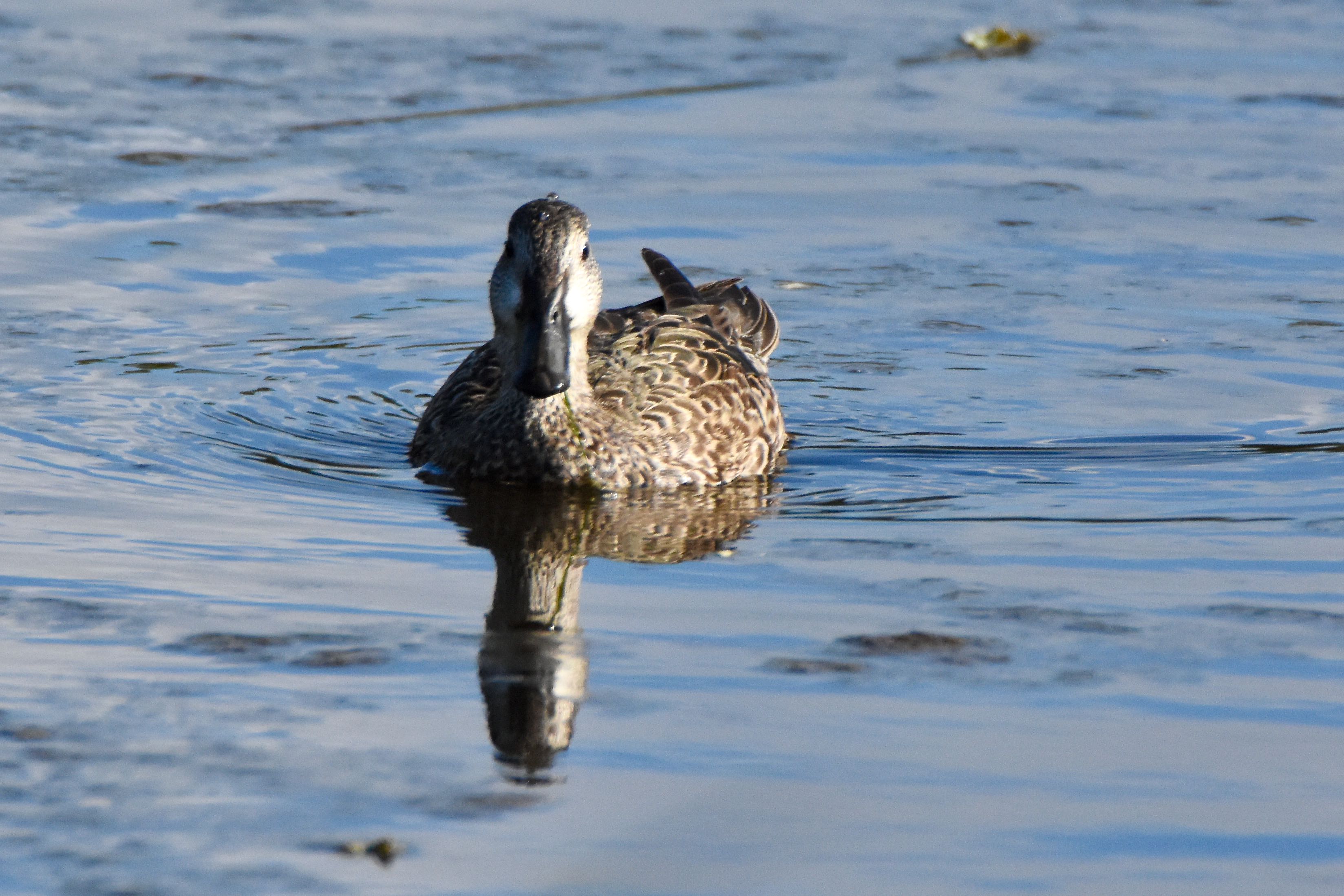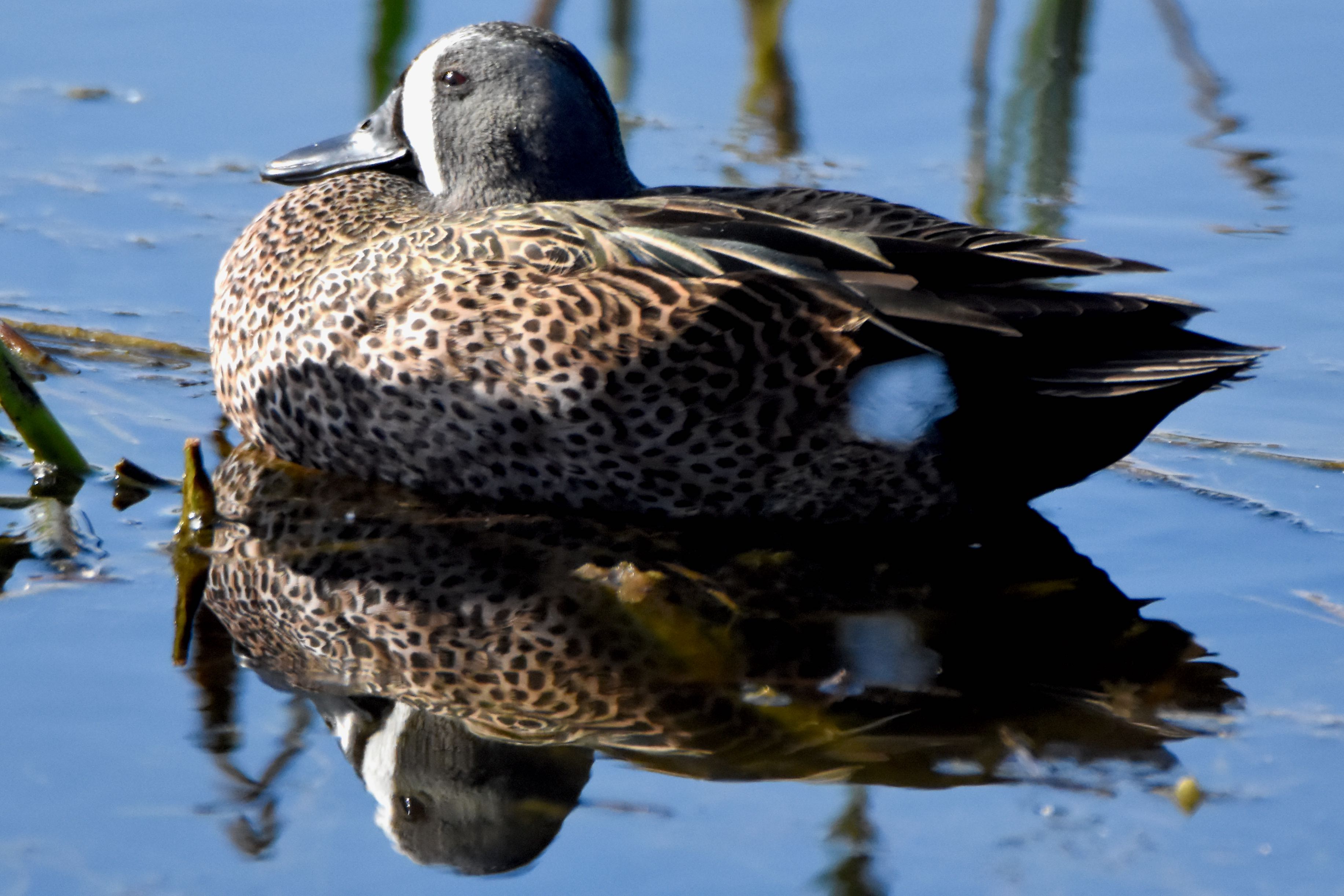
Blue-winged teal, photographed at Green Cay Nature Center, Boynton Beach, Palm Beach County, in March 2017.
For a big chunk of the year, the blue-winged teal, Anas discors, is the most common duck in South Florida. In fact, it trails only the mallard as the most common duck in North America.
It is a winter visitor to our region, traveling, in some cases, as much as 7,000 miles to get here. It spends the summer — breeding season — as far north as Alaska, but will take to South Florida's lakes, ponds and wetlands from early fall into late spring. They'll also migrate as far as Central American and South America.
There are some records of blue-winged teals nesting in Florida, but they are rare and scattered geographically, according to the Florida Fish and Wildlife Conservation Commission. (See link below.)
Blue-winged teals tend to hang out in shallow water near vegetation. They are dabblers, scooping up mostly plant matter with their bills. You'll see them butt up, head down into the water — dabbling — as they they dine on whatever they can find beneath the surface. Also on the blue-winged teal's menu: mollusks, crustaceans and insects.
Males are gray-brown, with a black head and a white crescent on the face. Females are more mottled in appearance. Both sexes have light blue patches on their wings that are most evident when the birds are in flight. You can see a bit of the blue on the bird shown in the main photo on the page.
While blue-winged teal is by far the commonly used common name for this duck, it's also known as bluewing, summer teal and white-faced teal. It is one of the first migratory birds to leave its northern breeding grounds, hitting the road so to speak as early as August and September, and one of the last to leave its winter retreat. Males usually are the first to arrive, while some females will wait as late as December before heading south for the winter.
Males and females will court and bond in January and February before making their way back north in the spring. It's common to see couples together here in South Florida. Blue-winged teals are ground nesters, with females picking the site, placed so that it is concealed from predators by thick grasses and other vegetation. Females also build the nest, scraping out a spot in the ground and lining it with grass and feathers.
Females will lay as many as a dozen eggs, which take 3 to 4 weeks to hatch. They also handle all incubation duties. Babies can walk within 12 hours and are capable of feeding themselves. Mom will tend to them for a while but will also leave them alone at times. Blue-winged teals fledge after 6 or 7 weeks. Skunks are a major egg predator, believe it or not.
Blue-winged teals are on the small side as ducks go, reaching a maximum length of about 16 inches and a wingspan of two feet. Females resemble mottled ducks in appearance, but size is one quick way to tell the two apart. Another: blue-wing teals have a dark bill, while the bill on the mottled duck yellowish-tan.
They are members of the duck family, Anatidae.
Green Cay Nature Center



